Foresta Umbra - Gargano nature reserve
Updated at: 15-09-2024
How this content can help you:
- The history and origin of the name "Foresta Umbra."
- The unique characteristics of the flora and fauna, including biodiversity.
- What to see: the Natural History Museum and the Umbra Pond.
- How to reach the forest from the main locations in Gargano.
- Available activities: hiking trails and guided tours.
- The best times to visit and the experiences in each season.
- Where to stay and eat near the Foresta Umbra.
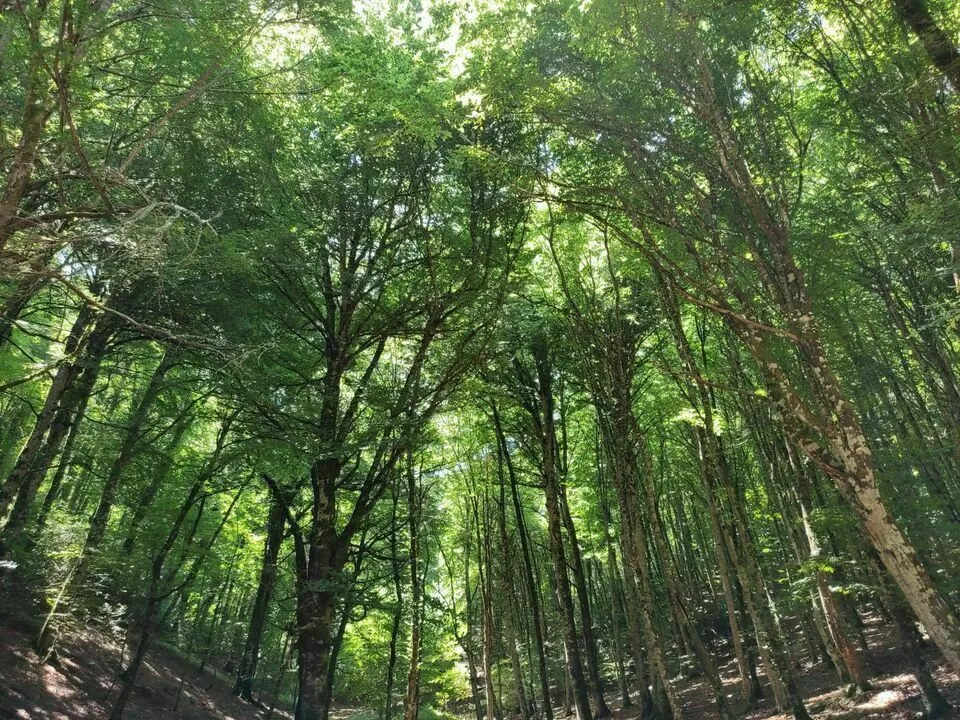
Why is it called the Umbra Forest?
The name "Foresta Umbra" derives from the Latin "umbra", which means "shadow" or "shady".
This name accurately describes the forest environment, characterized by very dense vegetation. The trees, robust and numerous, create a shaded background and a relatively dark atmosphere within the forest.
The Umbra Forest is a vast woodland complex located in the heart of the Gargano National Park, a protected area that encapsulates the rich biodiversity and natural landscapes of the Gargano, a mountainous prominence in northeastern Puglia.
This promontory, extending into the Adriatic Sea, is renowned for its extraordinary beauty and significant ecological value, representing one of the most precious and diverse ecosystems in the entire region.
Covering approximately 10,000 hectares, the forest is characterized by lush and dense vegetation, primarily composed of beeches, oaks, maples, and hornbeams. It is one of the oldest and best-preserved forests in Italy, famous for its biodiversity and as an exceptional example of a Mediterranean forest ecosystem.
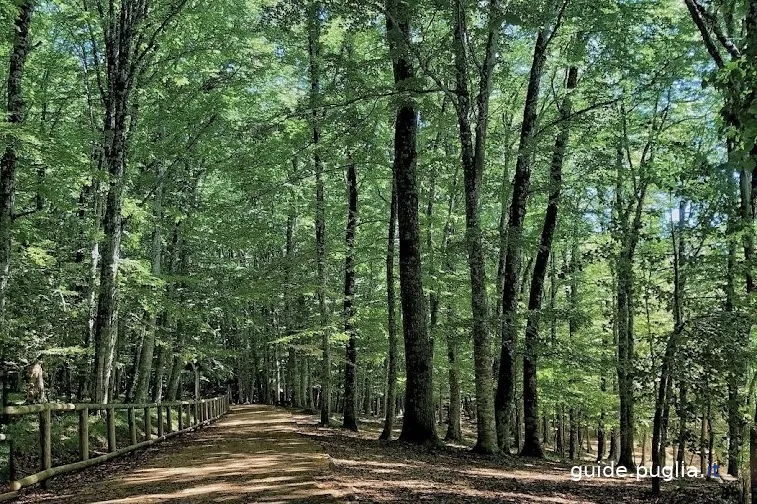
The Umbra Forest is particularly known for its Ancient Beech Forests, recognized as a UNESCO World Heritage Site for their exceptional ecological and biological value. These ancient beech forests host a wide range of flora and fauna, including several rare and protected species.
The Umbra Forest is open all year round, offering nature lovers the opportunity to explore its landscapes and trails in any season. Park access is free.
Why is it called Umbra Forest?
The Umbra Forest derives its name from the Latin term "umbra," meaning "shadow" or "shade." This name reflects the forest's environmental characteristics, known for its dense and thick vegetation that creates a dark and shadowy, almost mystical, environment.
The dense intertwining of ancient trees, primarily beeches, oaks, and hornbeams, filters sunlight in such a way as to create an atmosphere of semi-darkness even during the brightest hours of the day. This aspect has given the forest an aura of mystery and a unique atmosphere that has persisted for centuries.
The origin of the name is deeply rooted in the perception and history of the place, reflecting the natural environment and local legends that often develop around such characteristic and evocative locations.
Moreover, the forest's shady and cool environment has provided refuge and protection to countless species of flora and fauna, many of which are rare or protected. This has helped preserve the Umbra Forest as a vital ecosystem and a natural reserve of exceptional conservation and biological value.
How to Reach the Umbra Forest?
The Umbra Forest is primarily accessible by car:
- From the North: If arriving via the A14 motorway, exit at Poggio Imperiale-Lesina and follow the signs for Vico del Gargano. From there, continue following the signs to the Umbra Forest. The distance from the toll booth is about 78 km.
- From Vieste: You can reach the forest via the Garganica State Road 89 for about 9 km, then turn onto SP52 Bis towards Monte Sant’Angelo.
The distances from major tourist locations in Gargano are:
- Vico del Gargano: 14 km
- Mattinata: 21 km
- Rodi Garganico: 25 km
- Vieste: 26 km
- Peschici: 28 km
- Monte Sant’Angelo: 30 km
- San Giovanni Rotondo: 42 km
- Manfredonia: 45 km
What to See in the Umbra Forest?
Information Center and Naturalistic Museum
Located near the main entrance, the museum is open daily from 9:00 AM to 5:00 PM. Here, visitors can discover exhibits on the natural history of the region, including details on the Gargano's archaeology.
In the Information Center and Naturalistic Museum of the Umbra Forest, visitors can deepen their knowledge of the natural and cultural heritage of the Gargano National Park through a series of exhibitions.
Here’s what you can discover inside the museum:
- Natural History of the Gargano: The museum offers exhibitions on the region's flora and fauna, providing details on how species have adapted to this unique Mediterranean environment.
- Gargano Archaeology: There are artifacts and informational panels that tell the human history of the promontory, from prehistoric settlements to more recent developments.
- Reconstruction of a Typical Woodcutter's House: Outside the museum, visitors can see a reconstruction of a traditional house used by Gargano woodcutters, offering a glimpse into past forest life and work.
- Umbra Forest Ecosystem: The museum presents details about the specific ecosystem of the Umbra Forest, including interactions between various species and the importance of environmental conservation.
- Exploration Information: The center provides maps, guides, and advice on how to explore the Umbra Forest safely and responsibly, ensuring that visitors can make the most of their park experience.
The museum is a great starting point to better understand the ecosystem before exploring the trails.
Museum Opening Hours and Days
The Naturalistic Museum of the Umbra Forest is open daily from 9:00 AM to 7:00 PM from Palm Sunday until October 4th.
During other periods of the year, the museum is open by appointment, making it accessible for organized visits or specific groups.
Laghetto di Umbra
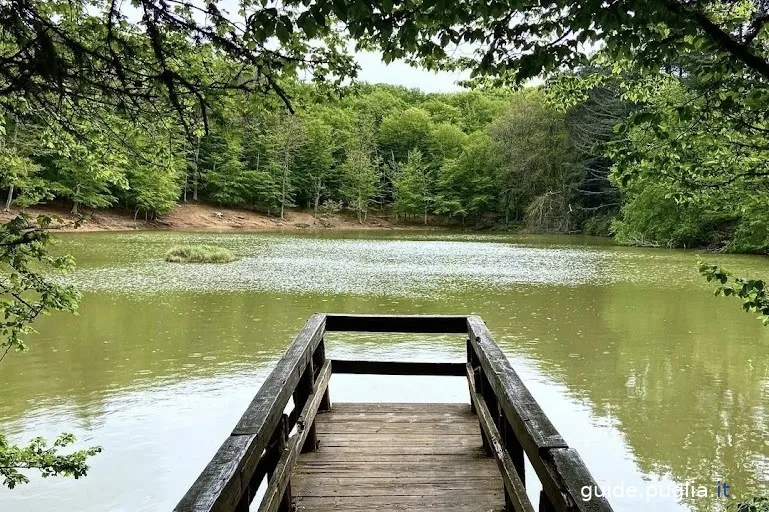
The Laghetto di Umbra is a small natural body of water that represents an important ecological attraction.
This lake is particularly appreciated for its tranquility and the opportunity to observe aquatic fauna up close, including various species of fish, turtles, and amphibians.
The Laghetto di Umbra is surrounded by lush vegetation typical of the forest environment and offers an ideal setting for relaxation and nature contemplation.
It is also a popular spot for picnics and brief stops during forest hikes. Thanks to its accessibility and beauty, the lake is a frequent destination for families and nature enthusiasts visiting the park.
This area is accessible during the park's opening hours.
What to Do in the Umbra Forest?
Guided Activities
Throughout the year, guided tours of the forest are available, organized by expert guides. These activities include themed tours, educational workshops, and even special programs for schools.
Guided tours are an excellent way to learn more about the forest's ecosystem interactively and engagingly.
For those who wish to participate in a guided tour in the Umbra Forest, these are organized twice a day, at 11:00 AM and 3:00 PM, and are also suitable for children, offering an engaging and educational way to explore the park.
Hiking Trails
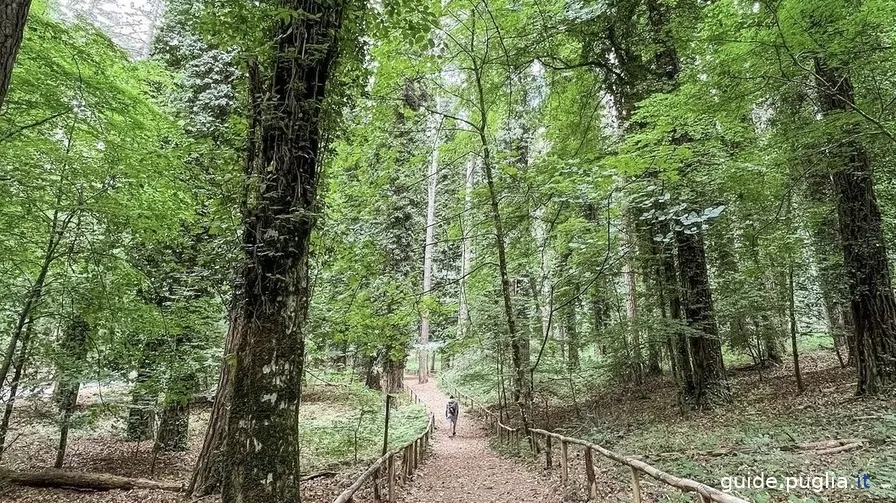
The forest has a network of well-maintained and marked trails suitable for hikers of various experience levels.
These trails allow for full immersion in the Gargano's natural environment and are open year-round. During the summer, the trails can also be explored in the evenings, thanks to cooler temperatures and guided night walks.
Visiting the Deer Area
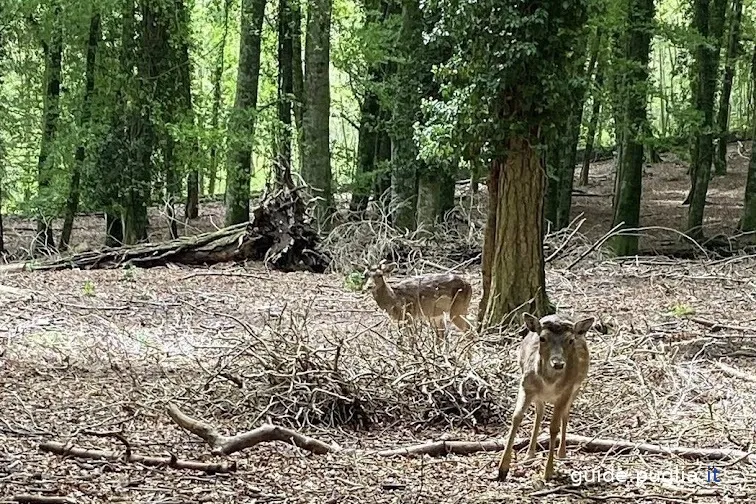
The deer area of the Umbra Forest is a place dedicated to observing these graceful cervids within the Gargano National Park.
This area is specifically set up to allow deer to live in a protected yet sufficiently natural environment, giving visitors the chance to observe them up close without overly disturbing their natural habits.
The area is equipped with fences that not only protect the animals from possible external threats but also ensure visitor safety. These spaces are often used for educational and conservation purposes, allowing the study of deer habits and educating the public on the importance of biodiversity and species protection.
Visiting the deer area in the Umbra Forest is undoubtedly one of the recommended activities for those who want to experience nature and get to know these fascinating animals up close.
Giocabosco and Accessible Trails
For families, Giocabosco offers a safe play area with wooden structures, ideal for children.
Additionally, some trails are designed to be accessible to people with reduced mobility, ensuring that everyone can enjoy the beauty of the forest. These areas are always open during the park's opening hours.
Flora and Fauna
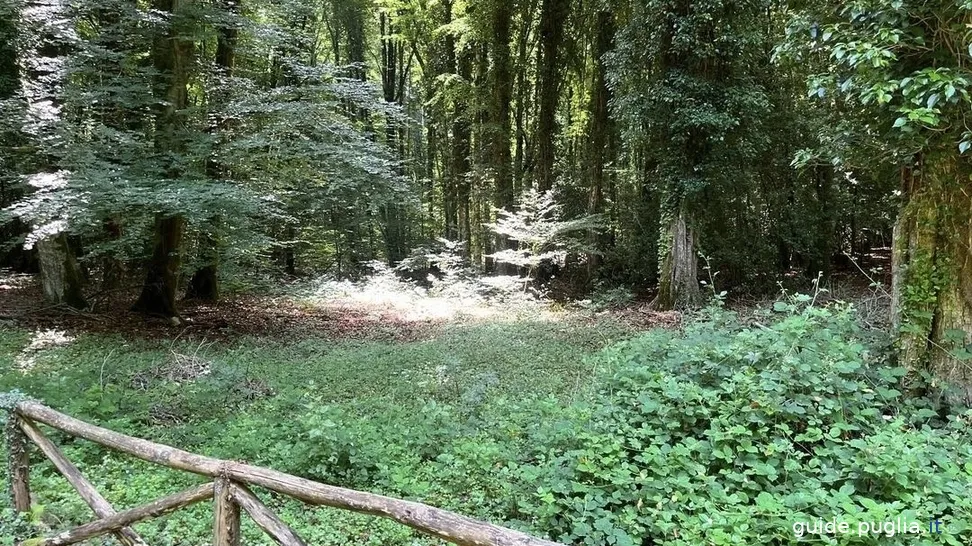
What Plant Species Can Be Found in the Umbra Forest?
The Umbra Forest is characterized by rich plant biodiversity with over 2,000 plant species. Among the most emblematic are the beech forests, which dominate large areas of the park. Other species include the oak grove, holly oak, white hornbeam, ash, mountain maple, and in coastal areas, the Aleppo pine. The undergrowth is rich in junipers, hollies, and various species of wild orchids.
What Animals Live in the Umbra Forest?
The fauna of the Umbra Forest includes a variety of mammals, birds, and other species. Among the mammals, notable are the Gargano roe deer, wild cat, badger, and wild boar. The birdlife includes various types of woodpeckers, eagle owl, peregrine falcon, and goshawk. Additionally, there are numerous migratory and resident birds.
Does the Umbra Forest Host Rare or Endangered Species?
Yes, the Umbra Forest serves as a refuge for many protected and some endangered species. The protected area significantly contributes to the conservation of critical habitats for rare species, especially in the context of the ancient beech forests, recognized as a UNESCO World Heritage Site for their ecological value.
How Can Wildlife Be Spotted in the Umbra Forest?
To spot wildlife in the Umbra Forest, it is advisable to participate in organized guided tours, often available through the park's visitor center. These guides are experts in locating and explaining the park's fauna safely and respectfully. Additionally, the well-marked trails offer the chance to encounter animals in their natural environment, especially at dawn or dusk when many animals are more active.
What Are the Best Times to Visit the Umbra Forest?
The best times to visit the Umbra Forest depend on what you want to experience and observe:
- Spring (March-May): This is an excellent time to visit the Umbra Forest, especially for nature lovers and birdwatching enthusiasts. Spring brings the blooming of plants and the awakening of wildlife after winter, offering a vibrant display of colors and animal activity. Additionally, the mild climate makes hiking enjoyable.
- Summer (June-August): Although it can be hotter, the forest provides a cool refuge compared to the high coastal temperatures, thanks to its altitude and dense canopy. It is an ideal time for long walks among the trees and enjoying shaded picnic areas.
- Autumn (September-November): Autumn is particularly magical in the Umbra Forest due to the foliage phenomenon. The leaves change color, creating a multicolored carpet underfoot. It is also a less crowded period, perfect for those seeking tranquility.
- Winter (December-February): Winter has its charm, with the possibility of seeing the forest covered in snow, offering postcard-like landscapes and a very peaceful atmosphere. However, it is advisable to prepare adequately for the cold.
Each season offers a unique perspective of the forest, so the best time to visit can depend on your personal preferences for specific activities such as hiking, photography, or simply relaxing in nature.
Where to Stay and Eat Near the Umbra Forest?
For those looking for places to stay and eat near the Umbra Forest, there are several options ranging from rustic accommodations to restaurants offering local cuisine:
Where to Stay
- Agriturismi and B&Bs: The area around the Umbra Forest offers various agriturismi and bed & breakfasts that take advantage of the natural beauty of the area. These establishments often also provide home-cooked food and a deep immersion in local nature and culture.
- Hotels and Mountain Lodges: There are also more traditional hotels and mountain lodges, some located right within the forest or in the immediate vicinity. For example, Elda Hotel and Rifugio Sfilzi are known for their hospitality and proximity to forest trails.
- Campsites: For camping enthusiasts, there are equipped areas where you can pitch a tent or park a camper, offering a more direct experience with nature.
Where to Eat
- Local Restaurants and Trattorias: Many nearby restaurants serve dishes from Puglia, using local ingredients such as olive oil, cheese, lamb, and fresh vegetables. The Trattoria Foresta Umbra, for example, is known for its traditional dishes and cozy atmosphere.
- Picnics: For those who prefer a more informal option, there are several picnic areas within the Umbra Forest where you can enjoy a meal in the fresh air, surrounded by greenery and the tranquility of the woods.
Reviews on Foresta Umbra - Gargano nature reserve
1 reviews
